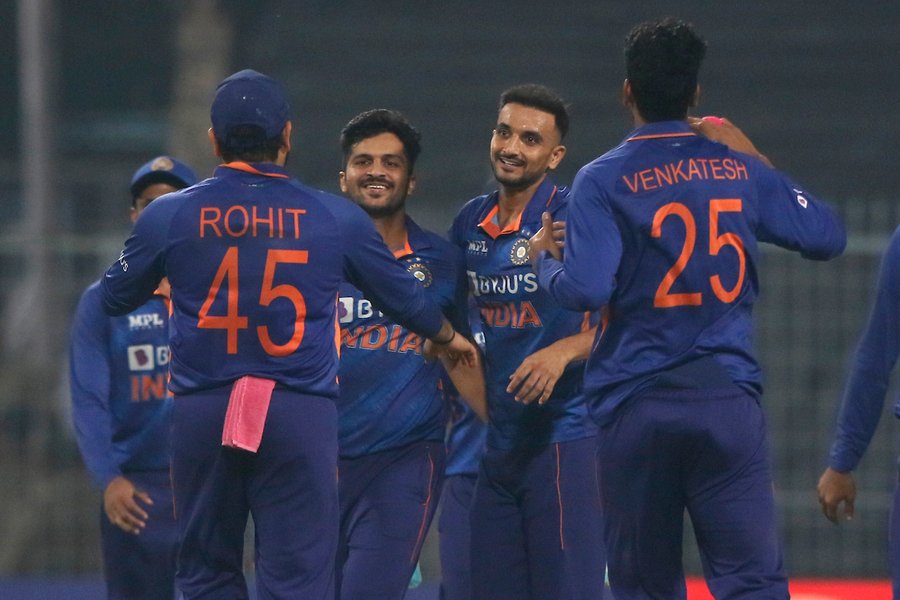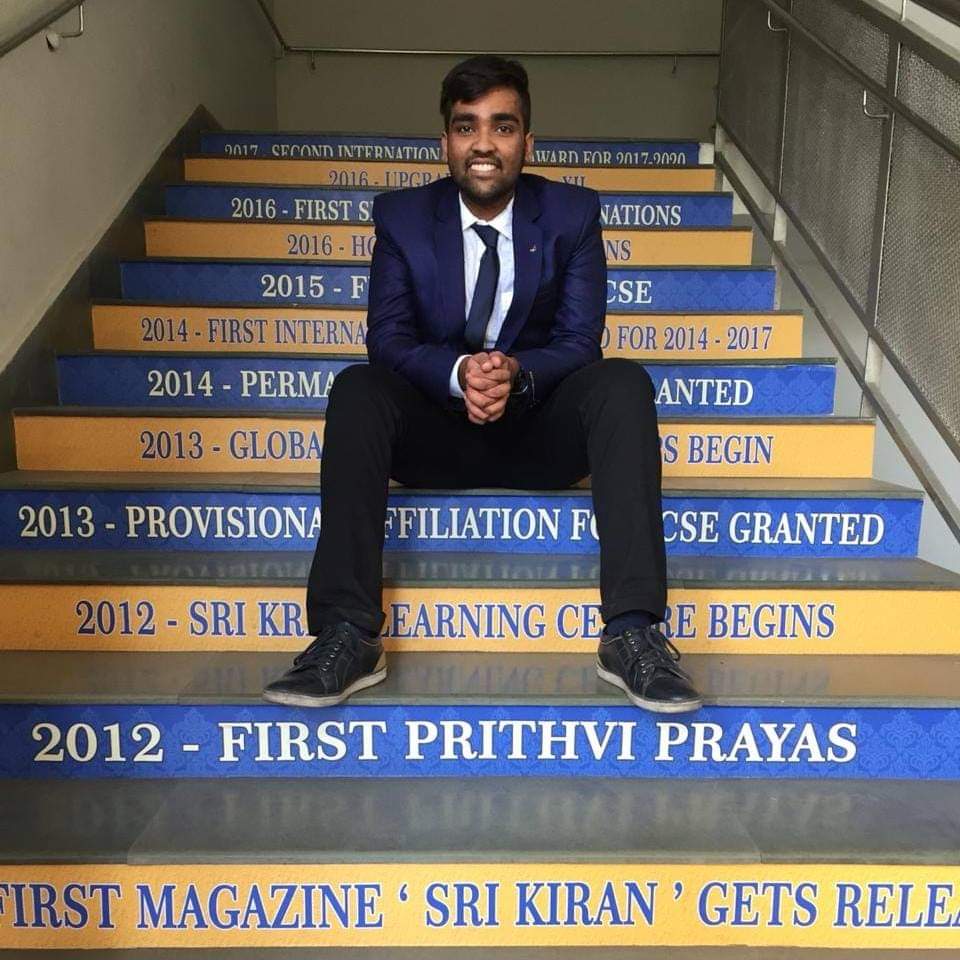India's selection conundrum deepens with problem of plenty ahead of 2023 World Cup
The first ODI against West Indies served as a reminder of the plethora of batting options India has at its disposal. The management will need to sort out the likely candidates for the next World Cup as soon as possible to avoid a repeat of previous ICC events which ended in failure.

The ICC World Cup is set to return in 2023 and will run from October to November. India will play host to the marquee event, 12 years after they last hosted the tournament on home soil. No one needs reminding of what had happened back then, as MS Dhoni’s glorious six earned India their second World Cup after a 28-year wait. While the countries of Bangladesh and Sri Lanka also hosted some matches back then, all matches in 2023 will take place in India.
That leaves us with a little over a year to go before the first ball of the tournament. Considering the next three to four months will be whole-heartedly spent concentrating on T20Is ahead of the T20 World Cup in Australia, the Men in Blue are expected to have a little under a year to prepare for next year’s event. Ideally, by this time the Indian team should have started to take a definite shape with the playing XI more or less settled bar a few exemptions. Doing so provides players with the opportunity to play as many ODIs as possible in the run-up to the tournament while allowing the management to try different combinations and batting orders.
However, that is far from the case for the hosts so far. At present, India’s batting order is in complete disarray with too many options to choose from. The fact that they play on home soil makes it even more difficult given the number of batsmen that are prolific in these conditions. While this problem of plenty seems to be a good one to have on paper, practically it can mean the team goes into the tournament unprepared. Let’s delve a little deeper into the pool of talent India has got at the moment.
For the opening spot, skipper Rohit Sharma is a locked-in candidate, although who pairs up with him is a tricky question. Shikhar Dhawan has recently returned to the ODI setup and is leading the Indian side against West Indies. In the first match, he hit a flamboyant 97 to propel himself back in form. Opening the innings with him was Shubman Gill, who himself scored a quickfire 64 and dispatched the ball to all parts of the field, making himself a candidate for the opening spot as well.
The most bizarre part is the fact that this was Gill’s first List-A match in 18 months and he wasn’t expected to take the field, as Ruturaj Gaikwad seemed to be the favourite for the position. The 25-year-old was the leading run-scorer in the Vijay Hazare Trophy in 2021-22 and has a phenomenal average of 54.73 in List-A cricket but is yet to make his ODI debut for the Men in Blue.
In Ishan Kishan India have another strong prospect, given the youngster already has an ODI half-century to his name in the three games he has played and averages over thirty after 18 T20Is. Not to forget regular Indian vice-captain KL Rahul, who had done a great job in the ICC World Cup 2019 as an opener and was the preferred choice to pair with Rohit following Dhawan’s injury. That makes it five hopefuls for the spot of the second opener; pretty ordinary when your potential talent pool is 1.3 billion people, right?
Next comes the top order, similarly choc-a-bloc with a plethora of stars. First up, the elephant in the room, former skipper Virat Kohli. The 33-year-old has been dismal of late, but will he still be a permanent fixture of the lineup if he keeps performing the same way over the next year? A team labeled as tournament favourites having an ageing batsman at number three who has not scored a century in three years simply sounds wrong on so many levels. Especially given the reserve options available to replace him.
Parimatch
Explore Parimatch review and find out what the best India cricket betting bookmaker is capable of!
Find OutDeepak Hooda already has a T20I century to his name, albeit it did come against Ireland. Even so, he put up an excellent cameo against England after that and managed his nerves well in the first ODI against West Indies. In Suryakumar Yadav India have yet another aggressive batter averaging over 40 in the formats. A T20I strike rate of 177 shows the capabilities of the Mumbaikar and given the attacking trends in white-ball cricket of late, he could be looked upon favourably by the management.
Capping off the list of prospects are the two Iyers, Shreyas and Venkatesh. The latter has so far failed to impress in national colours but everyone is aware of his potential. As for Shreyas, his statistics are similar to that of his competitors, with an ODI average over 40 and a strike rate in the high 90s. The 27-year-old stroked a classy half-century in the first ODI against West Indies. In recent times, he has established himself in a higher pecking spot but that could all change in the next year should Hooda and Yadav continue in the same vein of form. Who knows, maybe even Dinesh Karthik can enter the fray after his latest cryptic comment when asked about the World Cup.
The selection conundrum discussion cannot be complete without mentioning Rishabh Pant. The wicketkeeper’s inclusion in the lineup is a must, but where exactly does he bat? The 24-year-old recently notched up his maiden ODI century at number four and was a staple at the spot in the previous World Cup as well. However, if Virat Kohli has the number three exposition locked in, it would mean pushing the aforementioned pure batsmen down to five and six. It also begs the question of whether such a setup will be able to incorporate both ace all-rounders Hardik Pandya and Ravindra Jadeja.
From the aforementioned 14 names, a maximum of eight players will make the first XI. So far, however, India does not seem to have a clue of what its selection strategy is. Will, the openers be adjusted in the top order given all of them are in excellent form? Would that mean Virat Kohli being benched if he doesn’t recoup form ahead of the tournament?
The Men in Blue need to take learnings from their recent ICC events before answering all these questions. It has become a pattern for India’s top order to bear the brunt on tour games and then fail in clutch moments at the marquee tournaments. This catches both the middle-order and coaching staff off guard owing to a lack of experience in situations like these.
In the 2019 World Cup, four different batsmen played at number four in nine matches, in the form of Rahul, Hardik, Vijay Shankar and Pant. Somehow, the strategy worked out decently enough in the group stages, before the top-order collapsed in the semi-final against New Zealand. The middle order had no clue how to handle the situation and one after the other lost wickets in unnecessary ways.
Similarly, heading into the T20 World Cup 2021, Indian openers were in sensational form and were finishing off most matches without the aid of the middle order. However, as soon as the tournament started, they succumbed instantly against Pakistan and New Zealand, while the middle order followed the same fate despite having experienced players. Such incidents are what led Rohit Sharma to say it is a good thing the top order lost wickets early in the third ODI against England since it allowed the middle order to gain some crucial experience.
All in all, it is high time now for the duo of Rohit Sharma and Rahul Dravid to sort out a pecking order and play players accordingly in the upcoming ODIs. They can’t afford to draw the nation’s ire with another disappointing ICC campaign, this time at home too.

Comments
Sign up or log in to your account to leave comments and reactions
0 Comments